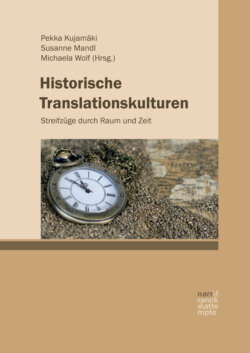Читать книгу Historische Translationskulturen - Группа авторов - Страница 36
2.2 The Celtic Revival: Language, culture and autonomy
ОглавлениеThe late nineteenth century and early twentieth century saw a vast increase in interest in both ancient and modern Celtic culture throughout Celtic regions in the British Isles and Lower Brittany. While much of the research conducted focuses on the idea of a Gaelic Revival, particularly in Irish culture and language, other Celtic cultures were also experiencing revival at the time. These revivals took place in a number of arenas, both within and between individual regions, and included the foundation of organisations to promote Celtic cultures, the publication of journals in the Celtic languages and the organisation of international Celtic Congresses. One particular journal of note published during the period of the Celtic Revival is the Irisleabhar na Gaedhilge (The Gaelic Journal), which was founded in Ireland in 1882. The focus of this “bilingual” (Irish and English) periodical was to preserve and cultivate the Irish language, but it also published pieces about developments in other Celtic regions in Scottish Gaelic, Welsh and French.
A key role in the revival was played by the organisations set up to promote Celtic languages and culture. In 1891, An Comunn Gàidhealach (The Gaelic Association) was founded in Scotland to support and promote Scottish Gaelic language and culture. Conradh na Gaeilge (The Gaelic League), founded in 1893, promoted Irish language and culture, and was followed in 1894 by the foundation of the Gaelic Athletic Association, set up to govern and standardise Irish Gaelic sports such as hurling and Gaelic football. The Cymdeithas yr Iaith Gymraeg (Welsh Language Society), which envisaged a bilingual Wales, was established in 1885 at the National Eisteddfod, a festival celebrating Welsh literature and music. On the Isle of Man, Yn Çheshaght Ghailckagh (The Manx Gaelic Society) was established in 1897 for “the preservation of everything that is distinctively Manx, and, above all, to the cultivation of a national spirit” (Morrison 1914: 132). Cowethas Kelto-Kernuak (The Celtic Cornish Society) was founded in 1902 for “the study and preservation of the Celtic remains in the Duchy of Cornwall, the revival of national customs and sports, [and] the Cornish language as a spoken tongue” (N.N. 1902). The clear parallels here in the five Celtic regions of the British Isles can be seen to illustrate the prevailing sentiment of pride in language and culture at the time, which led to increased communication and exchange between the regions.
The long-running Welsh Eisteddfod tradition had made a comeback in the wake of the Blue Books, with the first national Eisteddfod held in 1861. This inspired similar national events in both Scotland, with An Comunn Gàidhealach organising the first Mòd in 1892, and in Ireland, with Conradh na Gaeilge holding the Oireachtas from 1897. Similar events on the Isle of Man and in Brittany were also held but not until considerably later, in 1924 and 1971 respectively. Representatives and performers from each of the three regions regularly attended these festivals (O’Leary 1986: 103), which became a platform for intercultural discourse. At the 1898 Eisteddfod, the idea of forming a pan-Celtic association was discussed (ibid.), and this was then founded in 1900 as the Dublin-based Celtic Association (Stewart 2018: 148).
Though Celtic organisations and events throughout these regions were officially non-political, many contributed to a sense of identity and, particularly in Ireland and Scotland, a feeling of nationalism, and it was not uncommon for members to be involved in local or national politics. Hechter (2017: 167) uses Ireland as an example to illustrate the role a revival can play in nationalism: “the revival of ‘ancient’ cultural forms – such as Gaelic speaking in Ireland […] – is a frequent characteristic of contemporary nationalist movements”. In 1886, the first Irish Home Rule Bill was brought before parliament but was defeated. The Scottish Home Rule Association was founded in the same year but failed to gain much support. The north-south divide in Wales prevented a united front on the topic of Home Rule from being established, although a bill was eventually introduced in 1914. After three more attempts, the Irish Free State was declared in 1921, the year also seen as the end of the Gaelic Revival there.
